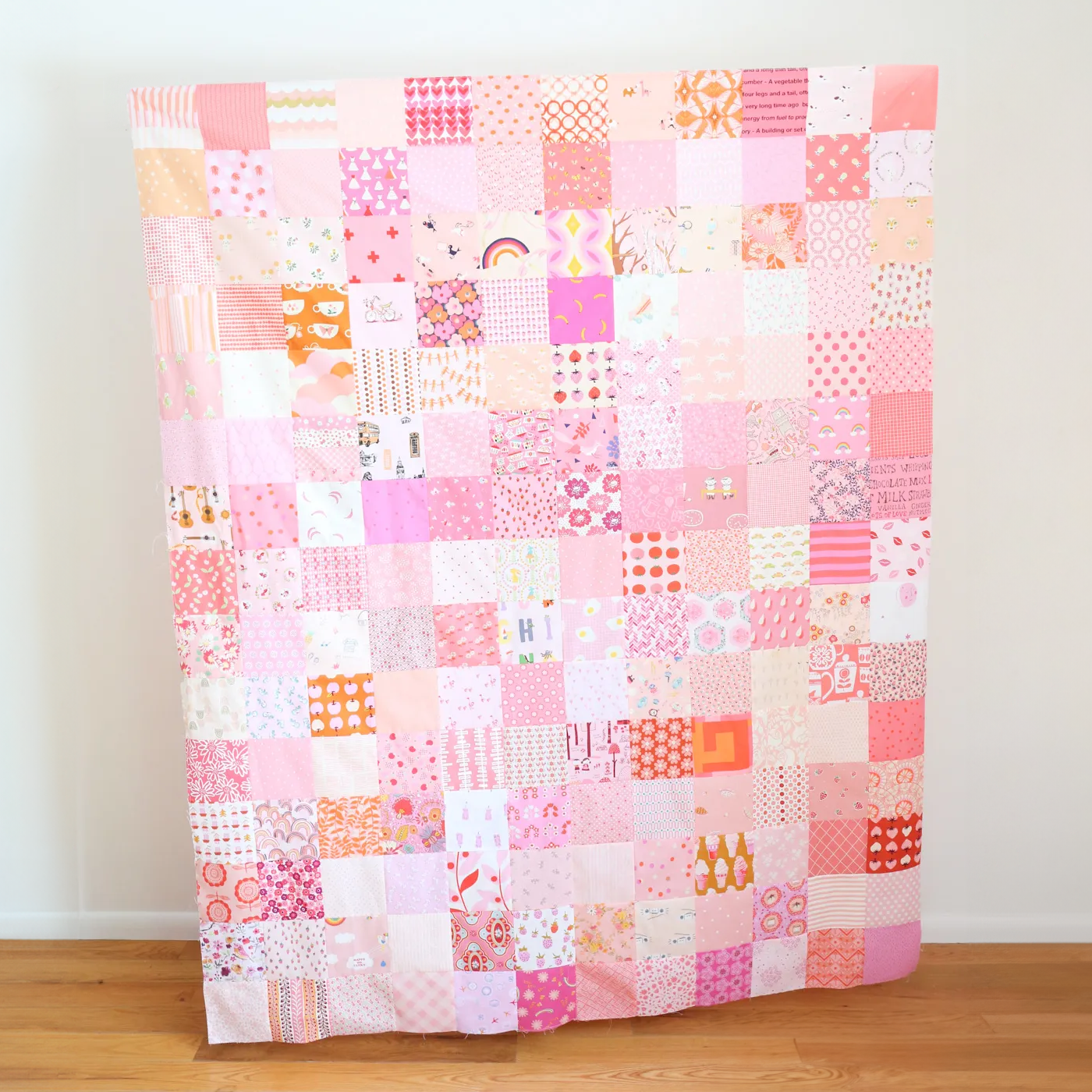How to Quilt: A Super‑Simple Starter Guide
Hello, my quilty friends!
Quilting looks fancy, but it’s basically sewing together a fabric puzzle and turning it into the coziest blanket you’ll ever own. If you can cut a straight-ish line and sew a grocery‑bag handle back on, you can make a quilt—promise. Let’s walk through the basics, minus the insider jargon, and get you stitching with confidence.
1. Gather Your Gear (No Cape Required)
You only need a handful of tools to start:
- Rotary cutter – Think pizza cutter for fabric. It gives cleaner cuts than scissors.
- Self‑healing mat – A thick green mat the cutter rolls on without getting dull. Size: 18" × 24" or bigger.
- Clear ruler – Acrylic, 6" × 24". Helps you measure and cut perfect rectangles.
- Sewing machine – Any basic model works. If it can sew a straight line, you’re good.
- Quarter‑inch foot (optional) – A snap‑on foot that keeps all seams the same width. Handy, not required.
- Pins or “wonder clips” – Hold layers together so things don’t slip.
- Iron and ironing board – “Press” fabric flat so blocks stay crisp.
- Fabric – Start simple with precut “fat quarters” (18" × 21" pieces). They’re big enough for practice and small enough to manage. We have a nice selection of Fat Quarter Bundles (FQBs) save you from decision overload—colors already play nicely together if that helps you jump in.
Quick Tip: Wipe your mat and ruler with a damp cloth now and then. Dust clogs up your cutter, and dull blades equal jagged edges.
2. Cut and Sew Your Pieces
Here’s where the puzzle starts.
- Wash and press (or don’t). If you fear fabric shrinking, wash it first. If you’re eager to sew, skip it—just use a color‑catching laundry sheet when you wash the finished quilt.
- Square the fabric. Line the folded edge against a straight grid line on the mat. Trim one clean edge so you’re starting square.
- Cut your shapes. Most beginner quilts use simple squares or rectangles—think 5" squares in rows. Use the ruler to measure, hold it firmly, and glide the rotary cutter along the edge.
- Lay out a design. Arrange your squares on the floor or a table. Snap a phone photo; it’s your memory aid if pieces get shuffled.
- Sew rows. Put two squares right‑sides touching (pretty sides facing). Sew along one edge with a ¼‑inch seam (about the width of your pinky). Repeat until the row is done.
- Press seams. Lift, press, lift—no ironing back‑and‑forth. Aim the seam allowance to one side so the row stays flat.
- Join rows. Place two finished rows together, right sides touching, and sew the long edge. Press again. Repeat until your quilt top looks like a giant checkered picnic cloth.
Cheeky Tip: Your first rows might look like they had a few too many energy drinks—little wobbles happen. Keep calm and keep stitching; a good press can hide a multitude of crimes.
3. Build the “Quilt Sandwich”
You need three layers:
- Quilt top – The patchwork you just made.
- Batting – A fluffy middle layer that gives warmth. Cotton or cotton‑poly blends feel great for beginners. Precut crib or throw sizes (like the Maker Valley Batting Rolls) save trimming time.
- Backing – A single large piece of fabric that covers the back; choose something you wouldn’t mind seeing a lot.
How to stack it:
- Tape the backing to a clean floor, wrong side up, smoothing out wrinkles.
- Center the batting on top.
- Place the quilt top right‑side up.
- Baste (hold) the layers: use safety pins every hand‑span, or temporary spray adhesive if you can baste outdoors.
Quilting it together:
- Straight lines: Attach a “walking foot” (feeds all layers evenly) and sew parallel lines across the quilt every 2–3 inches.
- Wiggle lines (free‑motion): Lower your machine’s feed dogs (the grippy teeth under the needle) and doodle loops or spirals while guiding the quilt. Practice on a small sandwich first.
- Send it out: Local long‑arm quilters will stitch beautiful patterns for a fee. Perfect if wrestling a queen‑size quilt sounds like arm day at the gym.
Finish With Binding (The Picture Frame)
Binding covers the raw edges so the quilt survives the wash.
- Trim the sandwich. Use your ruler and cutter to square everything up.
- Cut binding strips 2½" wide from leftover fabric, join ends on the diagonal (so seams are less bulky), and press into one long strip.
- Sew binding to the front. Line up raw edges, sew all around, stopping ¼" before each corner, pivoting the strip like wrapping a present.
- Wrap to the back. Fold the binding over the edge, clip in place, and hand‑stitch it down with an invisible ladder stitch. Too impatient? Stitch in the ditch by machine from the front—fast and durable.
- Wash and crinkle. Toss the quilt into the washer and dryer. The slight shrink makes those stitches pucker just enough for that classic, cuddly look.
Tiny FAQ
Q: What’s a fat quarter, exactly?
A: A half‑yard cut in half again, giving you an 18" × 21" rectangle—roomy enough for cutting squares, small enough not to overwhelm.
Q: How big should my first quilt be?
A: A throw or baby‑size (around 40" × 50") is perfect—manageable under a home machine and fast to finish.
Q: Do I need fancy fabric?
A: Quality quilting cotton feels nicer and lasts longer, but start with what makes you smile. Cheap sheets from the back closet also teach the basics—just don’t blame me for wonky weave.
Q: My blocks don’t match at the corners. Did I ruin it?
A: Nope. Call them “organic” and keep going. Every quilter has wobbly corners hiding somewhere.
Q: Can I hand‑sew the whole thing?
A: Absolutely. It’s slower but zen‑like. Netflix marathons welcome.
Final Pep Talk
Quilting isn’t about perfection; it’s about turning a pile of pretty fabric into something warm and useful. Each little mistake adds character (and great stories). Start small, use tools that make life easier—hello, pre‑coordinated Maker Valley bundles—and celebrate every finished step. Now cue your favorite playlist, pour a tall drink, and begin. You’ve got this!
Happy making,
🩵 Holly





Leave a comment
This site is protected by hCaptcha and the hCaptcha Privacy Policy and Terms of Service apply.